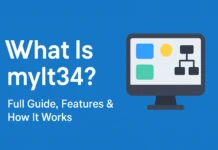The demand for employee monitoring tools has witnessed a significant surge in recent years, reflecting the growing importance of tracking and managing employee activities in the modern workplace. In fact, global demand for employee monitoring software skyrocketed by an impressive 65% between 2019 and 2022.
This surge highlights the increasing recognition of these tools as essential for enhancing productivity, ensuring security, and optimizing organizational performance. As we delve into the future of employee monitoring tools, it becomes evident that emerging trends and advancements in technology will further shape the landscape, paving the way for a more efficient and secure work environment.
Evolving Landscape of Employee Monitoring Tools
Gone are the days of manual monitoring methods. Digital solutions have taken center stage, offering real-time insights and comprehensive data analysis. The integration of technology in the workplace has accelerated the adoption of employee monitoring tools, as organizations recognize their potential to drive efficiency and mitigate risks. Moreover, attitudes towards employee monitoring are shifting, with increased acceptance and understanding of its benefits.
Emerging Trends in Employee Monitoring Tools
One of the key trends in employee monitoring is real-time activity tracking and analytics. Advancements in artificial intelligence (AI) and machine learning enable organizations to analyze vast amounts of data, identifying patterns and anomalies. Predictive analytics further empowers managers to anticipate potential issues and take proactive measures.
The rise of remote work has also given rise to specific monitoring tools tailored for distributed teams. These tools focus on tracking productivity and time management, helping organizations ensure that remote employees remain engaged and accountable. However, privacy concerns and maintaining employee autonomy present challenges that need to be addressed to strike the right balance.
Employee well-being is increasingly gaining attention in the workplace, and monitoring tools are evolving to support it. Through sentiment analysis and monitoring stress levels, organizations can identify signs of burnout and mental health issues, providing timely interventions. Additionally, these tools can gauge employee engagement and job satisfaction, contributing to a positive work environment and reducing turnover.
Integration with collaboration and communication platforms is another emerging trend in employee monitoring. By tracking interactions and communication patterns, organizations can gain insights into team dynamics, identify bottlenecks, and foster effective collaboration. This integration enhances overall team performance and drives success.
Advancements in Technology for Employee Monitoring
Technological advancements are reshaping the landscape of employee monitoring. Biometric and wearable devices are increasingly being used to monitor employees’ physiological indicators, such as heart rate and stress levels. This data not only contributes to employee well-being initiatives but also enhances security measures and access control within the organization.
Video surveillance and facial recognition are also evolving tools in employee monitoring. Video analytics enable organizations to monitor behaviors and identify potential security threats. However, balancing security with privacy concerns remains a critical challenge that organizations must navigate with transparency and respect for individual rights.
Natural language processing and sentiment analysis are revolutionizing the way organizations analyze employee communication. These tools can analyze written and spoken communication to identify sentiment, emotion, and intent. By leveraging this data, organizations can improve customer service, enhance employee training, and create a more supportive work environment.
Benefits and Challenges of Employee Monitoring Tools
Employee monitoring tools offer several benefits for organizations. Enhanced productivity and efficiency are often cited as the primary advantages. By identifying inefficiencies and providing insights into work patterns, organizations can streamline processes and optimize performance. Moreover, these tools play a crucial role in mitigating security risks and preventing data breaches, safeguarding both the organization and its employees.
5 Ways Employee Scheduling Software Can Make Your Life Easier
However, employee monitoring tools also raise ethical concerns. Maintaining employee trust and addressing privacy considerations are paramount. Organizations must communicate openly about the purpose and extent of monitoring, provide transparency, and ensure that monitoring practices align with legal and regulatory requirements. Balancing monitoring with individual privacy rights is essential for fostering a positive work culture.
The Future Outlook for Employee Monitoring Tools
Looking ahead, the future of employee monitoring tools seems promising. Continuous advancements in technology will further enhance the capabilities of these tools, providing organizations with more sophisticated insights and analytics. As these tools become more integrated and intuitive, they’ll shape workplace culture and contribute to employee well-being.
Striking a balance between monitoring and privacy rights will remain a crucial challenge. Organizations must prioritize the ethical and responsible use of these tools, ensuring that monitoring practices are respectful, transparent, and focused on enhancing employee performance rather than fostering a culture of surveillance.
Final Thoughts
The future of employee monitoring tools holds immense potential for organizations. By embracing emerging trends and advancements, organizations can unlock new levels of productivity, security, and employee well-being. As we move forward, staying informed about emerging trends in employee monitoring technology will be key to navigating the evolving landscape of the workplace.
A Step By Step Guide For Planning New Employee Onboarding Process







